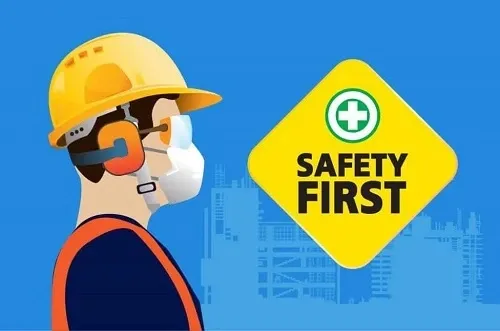Information
-
Document No.
-
Audit Title
-
Client / Site
-
Conducted on
-
Prepared by
-
Location
-
Personnel
PAINT SHOP SAFETY AUDIT
A. Electrical
-
1. Are the lighting circuits properly wired and do they have adequate<br>fuses and circuit breakers?
-
2. Is all permanent wiring in approved conduit and free of "juryrigging" such as extension cords in place of proper electrical cabling?
-
3. Does the supervisor enforce a "Lockout/Tagout" policy for electrical<br>machinery repair?
-
4. Is all electrical equipment effectively grounded IAW NFPA 70<br>(National Electrical Code)?
-
5. Does all electrical equipment within the painting area meet the<br>NFPA 70, Section 500 requirements for "explosion proof"<br>installations.?
B. Chemical
1. Toxics
-
a. Is all paint spraying done either outside or in a paint spray<br>booth designed in accordance with Section 1.3 of this Guide?
-
b. Are the workers knowledgeable about Time Weighted Average<br>(TWA) concepts regarding hazardous chemicals, such as those<br>listed in Table 1.1.1.
-
c. Are NIOSH/MSHA approved respirators used by the<br>employees working inside with solvent based paints or solvent<br>materials?
-
d. If so, has Post implemented the required respirator program<br>specified in Section 1.4 of this Guide?
-
e. Do respirators contain both an organic and particulate filter.
-
f. Do employees use solvent resistant gloves when working with<br>paints and solvents?
2. Flammables
-
a. Is all brush/roller painting using solvent based (flammable)<br>paints done in an open well ventilated area.
-
b. If not, is supply air ventilation designed to sweep across the<br>work area, and is this air then exhausted to the outside?
-
c. Is the ventilation adequate to prevent the buildup of high levels<br>of solvent vapors or to exceed the lower explosive limit of the<br>material which is being used?
-
d. Are flammables and combustibles limited to small amounts<br>needed in the immediate area and are they stored in approved<br>UL/FM flammable liquids storage cabinets?
3. General
-
a. Is Post using water based materials in place of solvent based<br>materials as much as possible?
-
b. Does the paint shop have a current file of Material Safety Data<br>Sheets (MSDS) for all hazardous materials used in the paint<br>shop? Are they available to the employees, have the employees<br>been properly trained, and do they understand the MSDS's.
-
c. Is any sprayer or drying equipment interlocked into the<br>ventilation system to ensure that the ventilation fans are always<br>operating prior to the start of painting or spraying?
-
d. Are hazardous wastes (primarily solvents and paints containing<br>heavy metals) disposed of properly in accordance with U.S. or<br>host country regulations, whichever is more stringent?
C. Ignition Sources
-
1. Is the electrical system for the paint shop checked regularly to ensure<br>it does not arc, overheat, or produce ignition sources? Are "explosion<br>proof" fixtures checked regularly?
-
2. If the paint shop does not have interlocking between the ventilation<br>system and the spraying operation, all fixtures within a 3M (10 Ft)<br>radius of the spray booth must be "explosion proof".
-
3. Does the supervisor enforce "No Smoking" requirements?
-
4. Are there other ignition sources such as portable heaters, dryers,<br>coffee pots, hot plates, etc. and are they properly controlled?
D. Mass
-
1. Are flammables cabinets, other storage devices, fans, or other<br>equipment properly secured so that there is little risk of their falling<br>over?
-
2. If a compressor is used, is it securely attached to the floor or other<br>sturdy support?
E. Rotating Equipment
-
1. Are fans or any other moving/rotating equipment less than 2.13<br>meters (7 feet) above the floor properly guarded?
-
2. Are all drive belts and other exposed rotating equipment properly<br>guarded?
F. Noise
-
1. Is the steady state noise level in the paint shop below the limits in<br>Table 1.1.1 (85 decibels).
G. Static Electricity
-
1. If the location is subject to lightning, is the building properly<br>protected against lightning strikes or secondary ground surges?
-
2. If the location is subject to a high buildup of static electricity, is there<br>an SOP for control of static electricity, particularly in the area where<br>the spraying is done?
H. High Pressures
-
1. Are the compressor, air storage tank, manifolds, and airlines<br>inspected regularly to ensure the integrity of the system?
-
2. Has the air system been "stepped down" to provide low pressure air<br>for paint sprayers and other air driven equipment used in the shop?
-
3. If an air compressor is used to supply breathing air does it have a<br>water trap , carbon monoxide and high temperature alarm?
I. Personnel
-
1. Does the supervisor ensure that all employees know and adhere to<br>safety requirements in the paint shop operation?
-
2. Are noise sources controlled to the point that noise does not interfere<br>with warning signals in the paint shop?
-
3. Does the supervisor ensure that only properly qualified employees<br>use the sprayers and other equipment in the shop?
-
4. Does the supervisor have a qualification and training outline to<br>identify initial and any follow-up training?
-
4. Does the supervisor have a qualification and training outline to<br>identify initial and any follow-up training?
-
5. Does the supervisor ensure that PPE is used properly and that<br>employees are not to take "short cuts"?
-
6. Are the proper warning/caution signs in a language which the work<br>force can understand?
-
7. Are they posted where the employees can see them?
-
8. Is the lighting adequate in all the work areas?
J. Fire Protection
-
1. Is good housekeeping practiced at all times? Is the trash, and<br>especially flammable or combustible trash, taken out every night?
-
2. Are paint or solvent contaminated rags placed into a covered metal<br>container?
-
3. Does the supervisor have a current emergency and evacuation plan?<br>Has it been communicated to the employees?
-
4. Does the paint shop have working fire detection or automatic fire<br>suppression system? Are they regularly maintained?
-
5. If the paint shop has a booth with a dedicated exhaust system or<br>extensive exhaust ducting for the filtration/ removal of solvents etc, does the ducting or booth have a fire suppression system (fire<br>detector and automatic extinguishing system)?
-
6. If the fire suppression system, for the spray area or spray booth, is<br>fixed, (sprinklers, or other permanent agent dispensers) are the<br>sprinkler heads covered with either light cellophane bags (.003<br>in/.076MM) or paper bags to protect them from the build-up of<br>spray paint? Are the heads inspected regularly?
-
7. Does the paint shop have the required number and types of fire<br>extinguishers and are they properly located in accordance with<br>FBO/OPS/FIR's requirements? Have the employees been trained in<br>the proper use of the fire extinguishers?
-
8. Have there been any changes in operations, or procedures which<br>would require re-positioning of the present fire extinguishers?
-
9. Are bilingual "NO SMOKING" signs posted and is the policy<br>enforced?
-
10. Is the spray area separated from the rest of the structure by one hour<br>rated walls?
-
11. Are the rated walls properly sealed to preclude the passage of spray,<br>gases, smoke, other products of combustion and flame?
-
I certify that all the information listed in the above report are correct and true.
-
Ariel P. Mariano, Assistant Post Occupancy Safety and Health Officer
-
Michael W. Davis, Post Occupancy Safety and Health Officer










